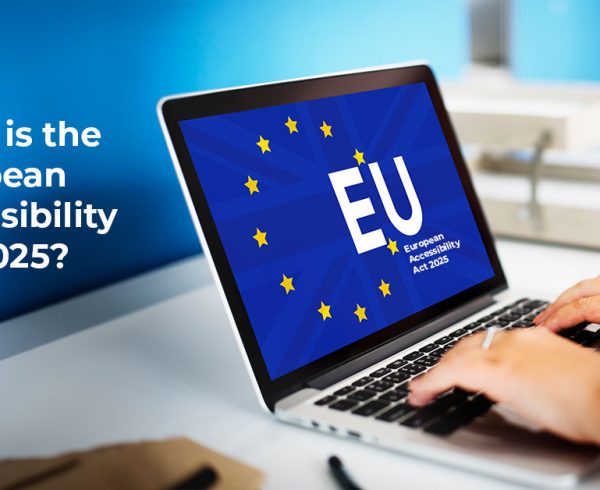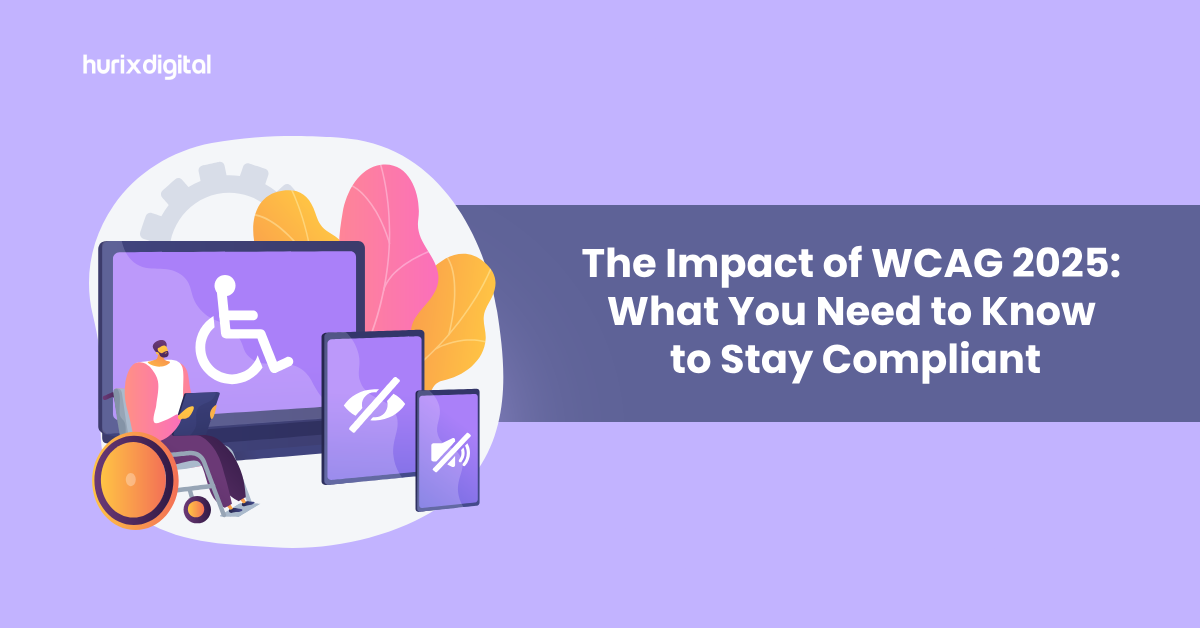Summary
This article provides a comprehensive overview of the European Accessibility Act and the Web Accessibility Directive. It also highlights the key aspects of accessibility guidelines and accessibility standards for European websites.
The vast and stimulating digital landscape is continually offering us exciting opportunities. We engage with a variety of digital platforms every day for a wide range of activities like entertainment & leisure, learning & growth, shopping, skill development, finances, travel, and many more.
However, not everyone can utilize these innovative digital platforms the same way due to accessibility issues.
Globally, it is estimated that 1.3 billion people have a disability in one form or another. As a result, people with disabilities are facing numerous health problem-induced inequities.
To combat these, countries are constantly striving to stringently follow accessibility laws to promise digital inclusion and access to equal opportunities for people with disabilities. The European Accessibility Act is one such inclusion directive implemented by the European Union in 2019.
Let us begin by understanding the European Accessibility Act in more detail.
Table of Contents:
- What is the European Accessibility Act? (EAA)
- What is the Web Accessibility Directive? (WAD)
- What are Web Content Accessibility Guidelines? (WCAG)
- WCAG Levels of Conformance
- Key Aspects of European Website Inclusiveness
- What is a11y?
- Wrapping Up
What is the European Accessibility Act? (EAA)
The European Accessibility Act is a landmark law passed by the European Union (EU) to ensure equal opportunities for people with disabilities while using everyday products and digital platforms.
The act takes into its ambit all personal digital devices like smartphones, laptops, eBooks, and television, and public service devices like ticketing machines, ATMs, e-commerce platforms, banking servers, and more.
It is also important to note that 7 in 10 Europeans believe, if implemented properly, accessible and inclusive goods and services can radically improve the lives of people with disabilities.
However, accessibility is still a serious issue in Europe, with private websites and platforms following the least number of accessibility guidelines.
Also Read: Everything You Need to Know About the EU Web Accessibility Directive
What is the Web Accessibility Directive? (WAD)
Just like the European Accessibility Act, the Web Accessibility Directive is another digital inclusion law passed by the European Union. This directive was passed on 22 December 2022 with the sole purpose of making websites and mobile applications accessible to people with disabilities.
However, the directive is only limited to public sector entities like transportation, public administration, education, healthcare, etc.
The web platforms have to follow three major directives under this web accessibility act. First and foremost, all platforms must issue an accessibility statement stating all the accessible and non-accessible content. Alternatives should follow the non-accessible content.
Secondly, all the websites must have a feedback mechanism in place that the users can use to raise requests. The mechanism can also be used to raise complaints about non-accessible content.
Lastly, all these public web pages and apps must comply with regular monitoring by the members of the states, with results reported to the commission every three years.
What are Web Content Accessibility Guidelines? (WCAG)
Web Content Accessibility Guidelines (WCAG) are technical web accessibility standards developed by the World Wide Web Consortium (W3C). The first set of guidelines, WCAG 1.0, was introduced on 5 May 1999.
They have been revised multiple times afterward to ensure comprehensiveness in the accessibility guidelines. WCAG 2.0 was published on 11 December 2008, followed by WCAG 2.1 on 5 June 2018. WCAG 2.2 guidelines were finalized in August 2023 and will be released soon.
The four main principles of WCAG are:
- Perceivable
- Operable
- Understandable
- Robust
The Web Accessibility Directive (WAD) and the digital aspects of the European Accessibility Act (EAA) have to follow the WCAG 2.1 guidelines to ensure standardized accessible digital content globally.
Other countries and their digital inclusion laws are also expected to follow the WCAG guidelines for responsible implementation of accessibility mechanisms.
WCAG Levels of Conformance
All the WCAG guidelines are divided into three conformity levels, namely:
1. Level A
This is the lowest level of conformance where websites and other digital platforms implement the bare minimum inclusivity guidelines.
2. Level AA
This is the mid-range conformance level, a little more robust than Level A. This is the most common acceptable range, and the majority of digital inclusive standards comply with this level.
All accessibility standards of the European Union are also expected to comply with Level AA.
3. Level AAA
This is the most robust and highest level of conformance. This level deems the platform to be fully accessible by people with disabilities easily and conveniently.
Key Aspects of European Website Inclusiveness
1. Legal and Ethical Framework
Under the European Accessibility Act, websites and all other digital apparatuses are guided by a robust legal and ethical framework.
The legal framework is drafted on the principles of the Web Accessibility Directive (WAD) as well as the United Nations Convention on the Rights of Persons with Disabilities (UNCRPD).
2. User-Centric Approach
One major praiseworthy aspect of the European accessibility standards is the stress of including people with disabilities during the designing and testing phase. This ensures that all digital products and services properly cater to all individuals, disabled or not, equally and indiscriminately.
Feedback from differently-abled individuals during the testing and designing phase ensures all the barriers that compromise accessibility standards are eliminated right from the beginning.
3. European Accessibility Act 2025
The European Accessibility Act regularly publishes new deadlines to ensure smooth and quick adoption of accessibility laws and regulations. In the last published deadlines, EAA mandates all countries part of the European Union to pass their own comprehensive and robust inclusivity laws, regulations, and administrative provisions by 28 June 2022.
Each country that failed to comply with the deadlines was levied a strict fine. Another important deadline to keep in mind is 28 June 2025. All the countries that failed to come up with their accessibility guidelines by 2022 must do so by 2025.
Also Read: A Complete Guide on France Web Accessibility Laws: What You Need to Know
What is a11y?
a11y Accessibility is a community-driven project all countries who are complying with accessibility standards must know about. The a11y project strives to provide all individuals with an inclusive living experience.
The a11y is an open-source platform that everyone can access to understand coding practices that ensure inclusivity. The code guidebook is also stored on GitHub by the organization to facilitate collaborative learning for inclusiveness. This is a reliable platform to reach out to if you need to learn about accessibility.
Wrapping Up
If European accessibility act websites and platforms fail to meet the deadlines of June 2025, the users and customers will be eligible to file complaints against the platform. The complaint will be filed in the national court or to other relevant authorities.
Consequently, if you need help with efficiently implementing accessibility standards or simply understanding the list of disability laws, you can reach out to us at Hurix Digital. We have been taking care of the accessibility standards of an extensive client base globally, and you can be our next customer.
Along with accessibility services, we also provide a variety of digital services like customer software development, learning technology services, and more.
Reach out to our expert team now and get started. Hope to see you soon!










